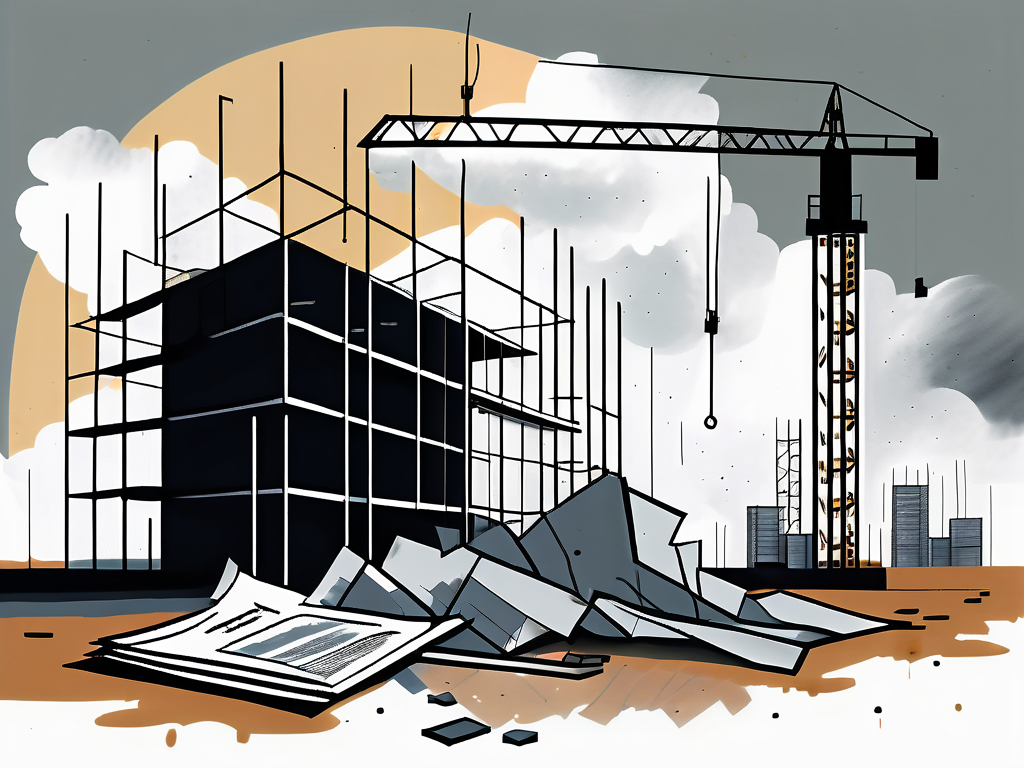Managing the Unexpected: Handling Delays and Challenges in Construction
Managing the Unexpected: Handling Delays and Challenges in Construction
In the dynamic world of construction, unexpected delays and challenges can significantly impact project timelines and costs. Understanding how to manage these situations effectively is crucial for any construction professional. This article will explore various aspects of construction delays, offer strategies for managing them, discuss the role of technology, and touch on the legal and financial implications associated with these challenges. By implementing these strategies, you can contribute to smoother project processes and minimize disruptions.
Understanding the Nature of Construction Delays
Construction delays occur when the completion of a project is postponed beyond the planned timeline. These setbacks can arise from a variety of factors, making it essential for project managers to comprehend their nature fully. Recognizing the root causes of delays can help in mitigating their effects and planning effectively.
Types of Construction Delays
Construction delays can be categorized into several types. The primary ones include:
- Excusable Delays: These delays are beyond the control of the contractor and may be due to weather conditions, natural disasters, or changes in governmental regulations.
- Non-Excusable Delays: Occurring due to the contractor's actions, these delays can stem from poor planning, resource mismanagement, or inefficient labor.
- Concurrent Delays: These involve delays from different sources that occur simultaneously, complicating the determination of liability.
Understanding these categories enables construction teams to formulate relevant responses and avoid misunderstandings with stakeholders. Each type of delay requires a tailored approach to management and resolution, which can significantly influence the project's trajectory and success. For instance, excusable delays might necessitate a renegotiation of timelines with clients, while non-excusable delays may lead to accountability measures and performance reviews for the contractor involved.
The Impact of Delays on Construction Projects
Delays can severely impact project budgets, timelines, and the overall reputation of a construction company. Economically, a delay can lead to increased costs due to extended labor hours and potential penalties from contracts. Further, delays can erode client trust, leading to poor relationships and potentially lost future contracts.
Additionally, the contingent staff and resources may be rendered inactive during a delay, diminishing overall productivity. Mitigating these impacts requires proactive management and clear communication. The ripple effects of delays can also extend beyond immediate financial implications; they can affect supply chain logistics, disrupt subcontractor schedules, and even lead to legal disputes if not handled promptly. Effective project management strategies, such as implementing robust scheduling tools and regular progress meetings, can help identify potential delays early on and facilitate timely interventions.
Moreover, the psychological impact of delays on team morale should not be underestimated. Frequent setbacks can lead to frustration among workers, which may result in decreased motivation and productivity. Maintaining an open line of communication and fostering a supportive environment can help mitigate these effects, ensuring that the team remains focused and engaged despite the challenges posed by delays. By prioritizing transparency and collaboration, construction firms can navigate the complexities of delays more effectively, ultimately leading to a more resilient project execution process.
Strategies for Managing Unexpected Delays
To combat unforeseen delays, construction managers must employ effective strategies that enhance responsiveness and reduce disruptions. These strategies often require a combination of planning, communication, and technology usage.
Proactive Planning for Potential Delays
Effective project management begins with comprehensive planning. This includes:
- Identifying all potential risks associated with the project.
- Developing contingency plans to address these risks before they manifest.
- Allocating sufficient buffer times in project schedules to accommodate unforeseen events.
By anticipating challenges, teams can save valuable time and resources when delays occur. Proper risk management can also facilitate more accurate forecasting and budgeting. Furthermore, utilizing project management software can assist in visualizing timelines and potential bottlenecks, allowing teams to adjust plans dynamically as new information arises. This proactive approach not only minimizes the impact of delays but also empowers teams to respond swiftly to changes in project scope or external conditions.
Effective Communication During Delays
When facing delays, maintaining open lines of communication among all stakeholders is vital. This involves:
- Regular updates to all parties affected, including contractors, stakeholders, and clients.
- Clarifying the reasons for delays and the steps being taken to mitigate their effects.
- Encouraging feedback from team members to foster a cooperative atmosphere.
By being transparent with communication, you help manage expectations and retain stakeholder confidence, which can facilitate smoother resolution of challenges. Additionally, utilizing collaborative tools such as shared digital platforms can enhance real-time communication, ensuring that everyone is on the same page. This not only helps in addressing immediate concerns but also builds a culture of trust and collaboration, which is essential for navigating the complexities of construction projects. When stakeholders feel informed and involved, they are more likely to support the necessary adjustments and contribute to finding solutions during challenging times.
Overcoming Construction Challenges
Challenges in construction can take various forms, and overcoming them often requires team collaboration and resourcefulness. Identifying common issues is the first step in addressing them effectively. Construction projects are inherently complex, involving a multitude of stakeholders, from architects and engineers to contractors and clients. Each of these parties brings unique perspectives and expertise, which can either facilitate progress or contribute to misunderstandings and delays. Thus, fostering a culture of open communication and teamwork is essential for navigating the multifaceted landscape of construction.

Identifying Common Construction Challenges
Construction professionals frequently encounter challenges such as labor shortages, material shortages, and regulatory compliance issues. Labor shortages can arise from high demand for skilled workers, while material shortages often stem from supply chain disruptions. These shortages can lead to increased project costs and extended timelines, which can be particularly detrimental in a competitive market where timely delivery is crucial. Moreover, the impact of labor and material shortages can ripple through the entire project, affecting everything from budgeting to client satisfaction.
Additionally, navigating zoning laws and obtaining necessary permits can complicate project timelines. The intricacies of local regulations often require extensive research and can vary significantly from one municipality to another. Understanding these challenges prepares teams for proactive management. For instance, engaging with local authorities early in the planning process can help clarify requirements and streamline approvals, ultimately saving time and resources. Furthermore, staying informed about changes in legislation or zoning laws can help teams adapt quickly, ensuring compliance and reducing the risk of costly delays.
Solutions for Common Construction Problems
Solutions to these challenges may involve:
- Investing in workforce training and development to ensure skilled labor availability.
- Establishing strong relationships with multiple suppliers to avoid material shortages.
- Consulting legal experts to navigate regulatory requirements smoothly.
TurnKey Homes experts often emphasize the importance of preemptive measures such as these to minimize the potential for delays and complications. Additionally, leveraging technology can play a pivotal role in addressing construction challenges. For example, project management software can enhance communication among team members, allowing for real-time updates and adjustments to schedules. Similarly, utilizing Building Information Modeling (BIM) can help visualize potential issues before they arise, leading to more efficient planning and execution. By embracing innovation, construction teams can not only overcome existing challenges but also position themselves for future success in an ever-evolving industry.
The Role of Technology in Managing Delays and Challenges
Technology can play a key role in alleviating delays and enhancing project management efficiency. By leveraging the latest tools and software, construction teams can streamline operations and improve communication.

Technological Tools for Project Management
Adopting modern project management tools can enhance scheduling, resource allocation, and budgeting. Solutions like project management software, scheduling applications, and collaborative platforms allow for real-time updates and progress tracking, promoting efficiency.
Furthermore, these tools enable better documentation, making it easier to track changes and communicate with stakeholders regarding project statuses.
How Technology Can Minimize Construction Delays
Implementing technology can minimize delays by facilitating more accurate planning and real-time problem-solving. For example, building information modeling (BIM) allows teams to visualize project elements to spot potential clashes before they occur.
Moreover, integrating IoT (Internet of Things) devices can provide instant data feedback about on-site conditions, helping teams react promptly to issues and maintain project schedules.
Legal and Financial Implications of Construction Delays
Understanding the legal and financial implications of delays is essential for protecting your interests. Contracts often contain specific clauses that address delays and liability, which can significantly impact financial responsibility.

Understanding Construction Contracts and Delay Clauses
Contracts typically outline the terms under which delays are excusable or non-excusable. By familiarizing yourself with these clauses, you can navigate disputes more effectively and make informed decisions regarding liability.
Consulting with legal experts when drafting or reviewing contracts can also safeguard against unfavorable terms that could exacerbate financial repercussions.
The Cost of Delays in Construction Projects
Financially, delays can lead to significant costs, including direct costs from extended labor hours and indirect costs such as penalties or loss of reputation. It's crucial to accurately assess and budget for potential delay-related costs.
By being proactive and implementing strategic measures, construction managers can mitigate these financial risks and maintain project integrity.
Summary
- Understanding the nature and types of construction delays is crucial for effective management.
- Proactive planning and clear communication are essential strategies for managing unexpected delays.
- Identifying and addressing common construction challenges enhances overall project efficiency.
- Utilizing technology can streamline project management and minimize delays.
- Awareness of legal and financial implications helps manage risk and protect interests.
In conclusion, effectively managing unexpected delays and challenges in construction requires a combination of thorough planning, open communication, and the strategic use of technology. By implementing these strategies, inspired by experts such as TurnKey Homes, project managers can navigate complexities and contribute to successful project outcomes.
Let’s talk about your project
Fill out the form, or call us to set up a meeting at
We will get back to you as soon as possible.
Please try again later.












